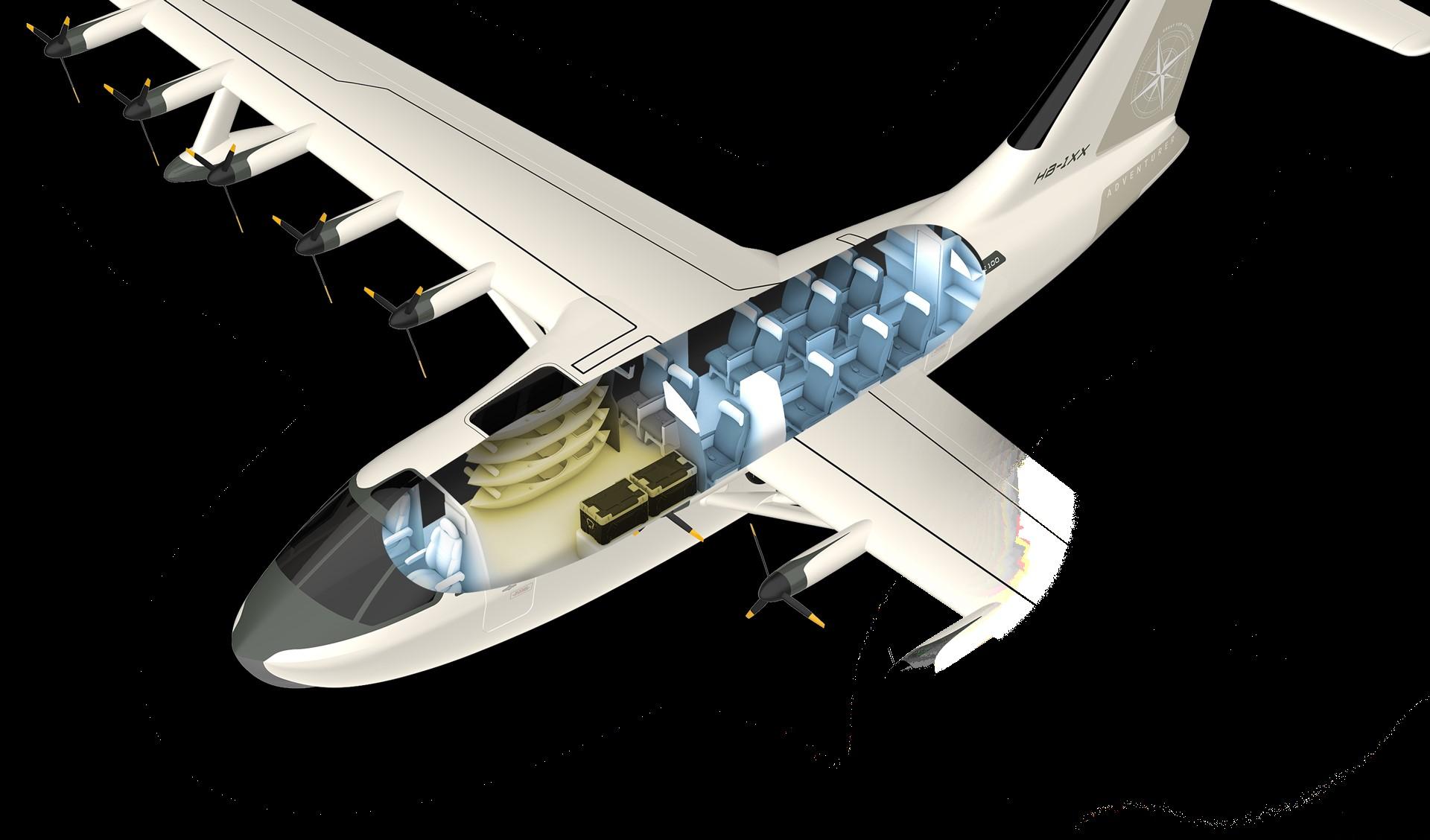
The combo-economy version of the PHA-ZE 100 comes with 12 seats and extra storage.
Jekta received its first potential order in the form of a letter of intent from Gayo Aviation for 10 of its PHA-ZE 100 electric amphibious seaplanes, marking the first conditional order for the Swiss startup.
With a headquarters in Dubai and main office in Sweden, Gayo Aviation is a global aircraft broker and charter operator with a focus on Asia, the Middle East and Northern Europe. The company wants to use Jekta’s PHA-ZE 100s for “environmental and experiential” recreational flights in Nordic countries, where it currently operates seaplane services on behalf of OceanSky Cruises, a company devoted to sustainable tourism, Gayo founder Gisle Dueland says.
Dueland says Gayo is interested in acquiring the PHA-ZE 100 in two configurations: the typical, 19-seat economy layout for regional travel and a more-spacious, 13-seat combo-economy layout for luxury tourism and environmental sightseeing trips.
“We can take advantage of the spacious layout for the combo version to bring along things like kayaks and equipment for hunting and fishing trips,” Dueland tells Aviation Week’s AAM Report. “The 19-seater is perfect for regional travel and connecting remote areas to a hub, and because it’s an amphibious aircraft, we don’t have to build use cases solely on the basis of water availability.”
Speaking to the AAM Report, Jekta CEO George Alafinov identified several shortcomings associated with traditional seaplanes. They include high operating and maintenance costs, operational limitations and the impact of current and future environmental regulations. Through its electric propulsion and highly efficient design, the PHA-ZE 100 can drastically cut energy and maintenance costs and reduce pollution and noise, solving many of those challenges, he says.
Furthermore, because the aircraft is built with a composite hull that does not rust like the metal hulls on most other commercially available seaplanes, it will not be plagued by challenges with corrosion that can often require between 4 and 6 hr. a day of manual cleaning to prevent, Alafinov says.
Jekta’s aircraft also does not use floaters like many flying boats, which are limited by wave height and cannot be safely operated in windy or inclement weather. And the seaplane was designed to spin on its own axis and can even taxi in reverse, making it simpler for passengers to embark and disembark in areas without much space to maneuver.
“The aircraft can put the gear down, go to the shore, disembark and embark passengers, reverse back into the water, turn around on its own axis and fly off,” Alafinov says. “This greatly increases the possibility of the usage of this aircraft.”
The aircraft’s low noise levels and lack of emissions also mean that it can operate in European countries like Norway and Switzerland where stringent environmental regulations have restricted the use of conventional seaplanes, he adds.
Alafinov estimates there are about 1,000 seaplanes in commercial service around the world being used by around 350 operators, ranging from those with just a single aircraft to fleets of around 60 seaplanes. While the natural growth rate of that market is around 5% per year, he sees an opportunity to “exponentially” grow the global seaplane market with electric propulsion, particularly in large developing markets that have an abundance of traversable waterways and a relative shortage of usable airfield and airports.
“We believe that this market is going to greatly expand the whole seaplane niche globally, especially in those developing markets such as India, Indonesia, the Philippines and the whole belt between China and Australia,” Alafinov says.
Jekta is currently targeting 2029 for first deliveries of its PHA-ZE 100, short for Passenger Hydro Aircraft – Zero Emissions 100.
